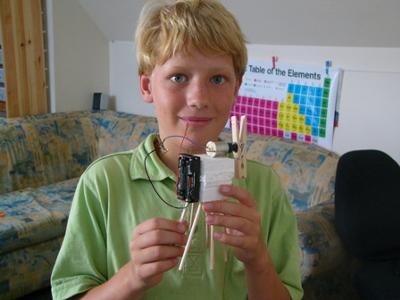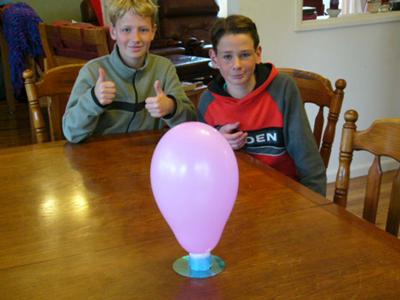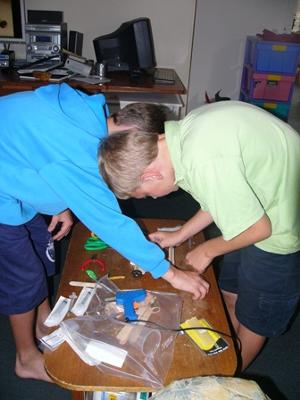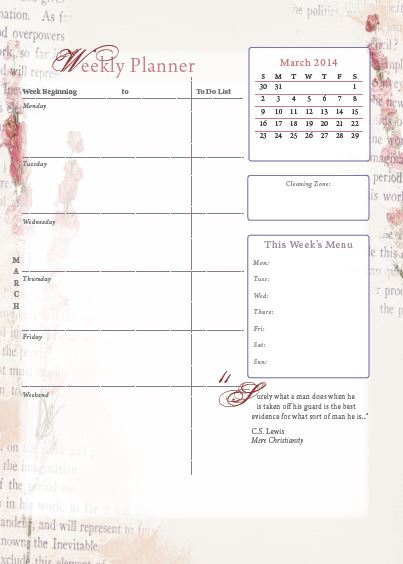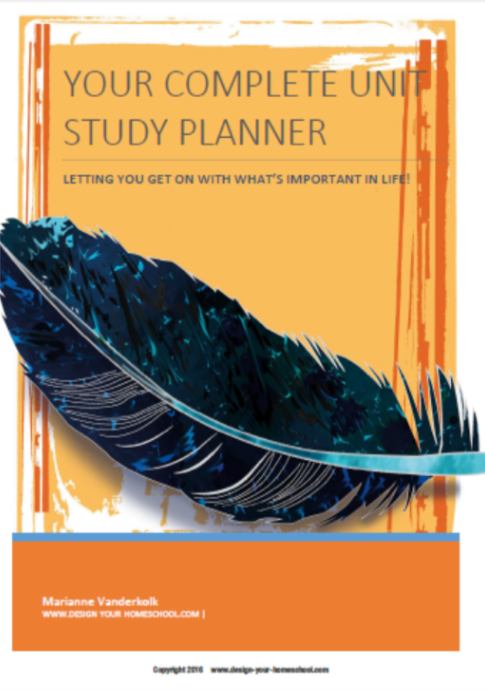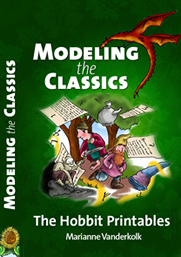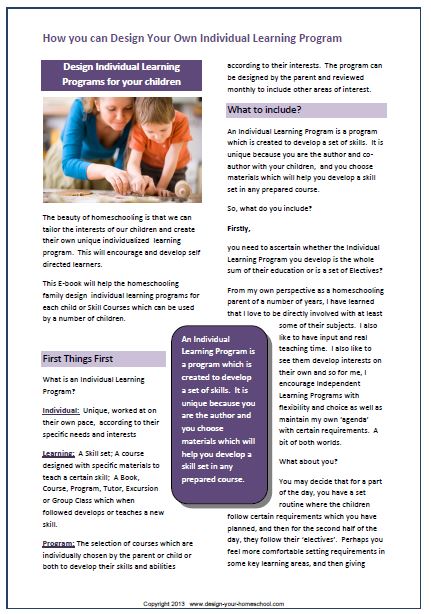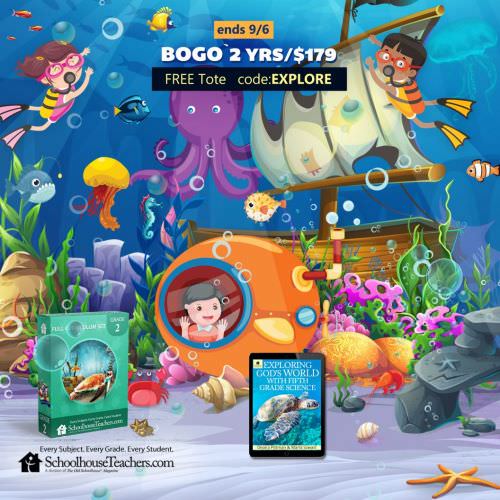Why Begin with Cool Science Experiments?
When Kids' science experiments are cool science experiments, you'll hear, "Cool!" "Oh", "Ah!" "Wow!" "Awesome!"
You'll see mess, bits of sticky tape, cardboard rolls, collections of popsticks, glue, motors, water, hammers and more.
You'll miss your glue gun, your tools, hairdryer, kitchen implements....
But... you'll see children loving and learning science.
Kids Science Experiments - Free Science Reources
Jiggle-Bot |
Balloon Hovercraft |
There has been three things that have worked in our homeschooling family as far as Science is concerned.
- Reading Science together
- Nature walks and observing nature in our home
- Kids Science Experiments - want to try some? Great experiments here!
However, the one I really wish we did more of - is some really cool science experiments. I think you would understand when I say I haven't always had the materials available or the time to spend setting up or explaining the experiment. We would more often read about it, but not do it. And although it was interesting, it wasn't quite exciting! Sound familiar to you?
Well, you can imagine my excitement when I found Supercharged Science! We now use some really cool science experiments as a springboard into science and as soon as you watch a video, with your kids around, they are hooked!
Aurora Lipper, the author of Supercharged Science and a real rocket scientist and teacher, says:
We recommend teaching science from the inside-out, meaning that you start with an experiment or two that really hooks your kids… the kind that makes them (and you) say; "WOW!" or "Cool!" Let them roll around and play with the experiment for awhile, and when they come running back to you with questions like "Why did that happen?" or "What's going on here?", then they've signaled you that they are ready for the more academic reading and lesson videos. Their retention will shoot above 75% when you do it this way, and comprehension flies through the roof!
- Hook them with cool activities (which is what e-Science Curriculum Program is all about). So visit the Experiment Section and pick one or two that really make them say WOW!
- Let them roll around and play with the experiment for a bit on their own.
- When they run back to you and say: "That was cool… but how does it work?" now you pull out your Reading Download from the e-Science Curriculum Program for the unit and go over the details together. You can also read up more in the text surrounding each experiment.
- When they're ready for more, point them to the experiment section again to pick the next ones they want to do.
- Sit back with a camera and watch, snapping photos as you go along.
Some of our Cool Science Experiments
Hydraulic Earth Mover
Acids and Bases Experiments with Chemistry Set
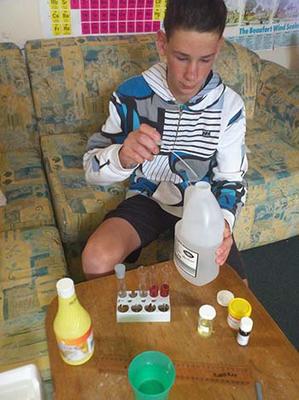
I have recently been on Supercharged Science and have found out how to make an indicator to find acids or bases. You need to make a litmus solution.
1. Get a test tube and fill it with about three centimetres of water.
2. Measure three quarter teaspoon fulls of litmus powder and put that in your test tube.
3. Put on a stopper and shake it up and leave it with the stopper on for twenty four hours but make sure you use it in the next two days otherwise it will go bad.
4. After you have waited twenty four hours you can put five droplets into a test tube with five centimetres of water.
5. Test solutions such as vinegar, lemon juice, orange juice, bicarb soda.
If the water turns red then the substance you added was an acid, but if it stays the same or becomes a darker purple it was a base. You can try putting anything in the test tube to see if it is a base or an acid.
Making an Electromagnet
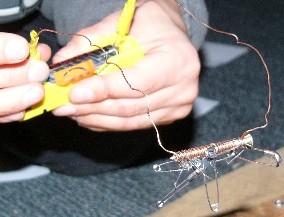
Today I made a screw into a magnet by using electric current.
I did this by twisting copper wire around the screw. The copper wire could not touch itself because if it did, it would not work. Then I put electrical tape around the ends so that it would not give me a shock when I was holding it. Then I put the ends of the wire onto the ends of a battery and this made the screw into a magnet. Then I tried picking up some safety pins with the magnet and it worked. The wire got hot.
After that, I got a bigger magnet and used it on the bottom of my truck so when I drive around, I can pick up safety pins and other metal things which are lying around.
Air Pressure Experiment
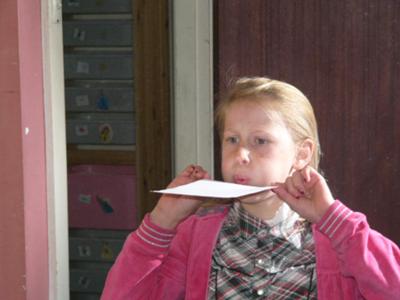
If you get a piece of paper and you blow underneath the paper what would you think would happen? (would the paper go up or down ?)
The page would go up. If you blow on the top of the paper (would it go up or down?) it would go up. It is amazing!
This happens because higher pressure always pushes. The higher pressure is underneath so the paper blows up!
By Talitha
Changing the colour of a flower experiment
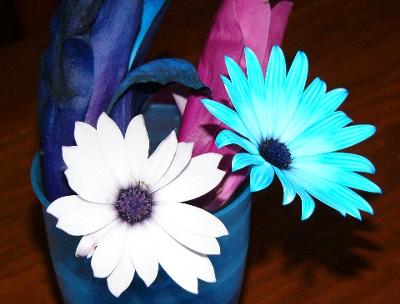
Today, I got two different flowers from our garden. One was a white daisy and the other was a pink and purple magnolia.
I put these the stems of these two flowers into blue food colouring. I left them for an hour and when I came back, the white daisy showed the blue colouring as the colour went up the stem and the veins of the petals.
After another half an hour, the big purple magnolia started changing and you could see blue in its veins.
A few hours later, both flowers turned quite blue over their entire petals.
I thought it was quite exciting to watch. By doing this experiment, you can tell how quickly water goes up the stem to the petals of the flower.
Tell us some really cool science experiments
Share it with us.
What did you think would happen?
What did you use?
How did you do it?
What did happen?
What did you learn?
What Other Visitors Have Said
Click below to see experiments from other visitors to this page...
SODA CAN TRICK Not rated yet
The way you do this trick is by getting an empty soda can and put in one or two table spoons of water and then put it on the stove until it starts making …
Where to from here?
- Homeschool Science Bookshop - Find Resources Here
- More Free Easy Science Experiments here.
- Home School Science Sitemap


